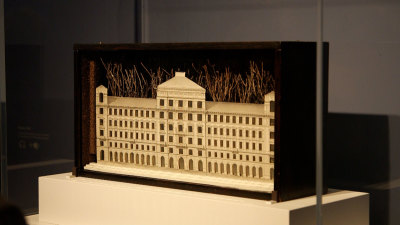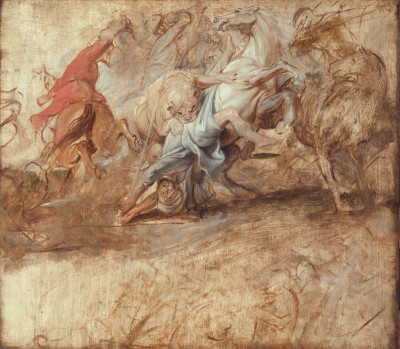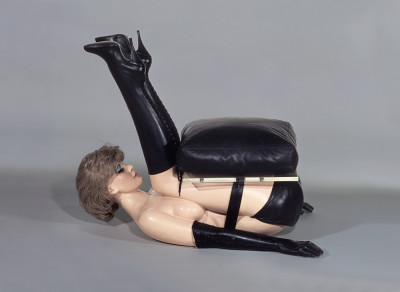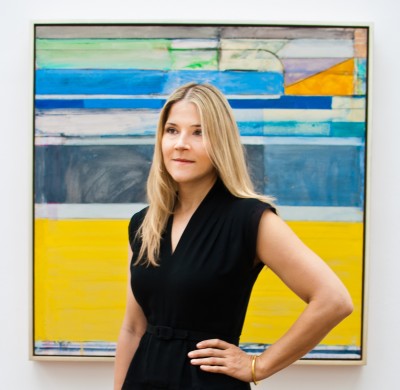Curator’s picks: Dennis Hopper
Curator’s picks: Dennis Hopper
By Petra Giloy-Hirtz
Published 15 August 2014
The exhibition curator highlights four moments of 1960s America immortalised through Hopper’s unique photographs.
-
After leaving Hollywood in the late 1950s to study acting in New York, Dennis Hopper settled back in Los Angeles in 1961 with his first wife Brooke Hayward, the daughter of film producer Leland Hayward and Hollywood star Margaret Sullavan. When their house burned down in a disastrous Bel Air fire two weeks after moving in, they took up residence at 1712 North Crescent Heights Boulevard. They started collecting art with the fire insurance money, acquiring works by Edward Kienholz, Roy Lichtenstein, Ed Ruscha, Frank Stella, Andy Warhol and others, displayed alongside Art Nouveau objects and Mexican memorabilia. Terry Southern, the novelist and screenwriter, described “a house of such gaiety and wit that it seems the result of some marvelous scavenger hunt, full of improvised treasures, the bizarre and the beautiful and the banal in wild juxtaposition, everything the most of its kind”.
-

Dennis Hopper, Hopper House at 1712 (Wall Detail), 1965.
Photograph. 24.92 x 16.26 cm. The Hopper Art Trust. © Dennis Hopper, courtesy The Hopper Art Trust, www.dennishopper.com. Organised in collaboration with The Hopper Art Trust.
-
Throughout the 1960s Hopper frequently travelled to New York, touring the Museum of Modern Art and the galleries, sometimes in the company of Henry Geldzahler, curator at the Metropolitan Museum of Art. While there he visited Warhol at the Factory, where he encountered Gerard Malanga, Taylor Mead and David Hockney. He also met Robert Rauschenberg and visited Roy Lichtenstein in his studio.
-

Dennis Hopper, Andy Warhol and Members of the Factory, 1963.
Photograph. 16.69 x 25.07 cm. © Dennis Hopper, courtesy The Hopper Art Trust, www.dennishopper.com Organised in collaboration with The Hopper Art Trust.
-
Besides its burgeoning art scene, 1960s Los Angeles was home to a vibrant culture in music, architecture, fashion, and of course, film. Californian bands provided some of the decade’s defining soundtracks: The Beach Boys, Buffalo Springfield, The Byrds, The Doors, Grateful Dead, Jefferson Airplane and The Lovin’ Spoonful are among the many bands photographed by Hopper at concerts and music festivals.
-

Dennis Hopper, Jefferson Airplane, 1965.
Photograph. 16.59 x 24.54 cm. The Hopper Art Trust. © Dennis Hopper, courtesy The Hopper Art Trust, www.dennishopper.com. Organised in collaboration with The Hopper Art Trust.
-
The high point of the American civil rights movement was the march from Selma to Montgomery, the capital of Alabama, which began on 21 March 1965. The 54-mile march took five days and involved 4,000 marchers led by Martin Luther King Jr and allies such as Ralph David Abernathy Sr. Ministers, priests, nuns and rabbis had answered King’s call.
Hopper later recalled that “[Marlon] Brando got me involved [in the march] … He pulled up in his car and said, ‘What are you doing day after tomorrow?’, and I said, ‘Nothing’, and he said, ‘You want to go to Selma?’ And I said, ‘Sure, man. Thanks for asking me!’ [When we got there, police] dogs were biting, and people were being bombed, and it was like, ‘Where are we?”’.
-

Dennis Hopper, Martin Luther King, Jr., 1965.
Photograph. 23.37 x 34.29 cm. The Hopper Art Trust. © Dennis Hopper, courtesy The Hopper Art Trust. www.dennishopper.com.
-
Dennis Hopper: The Lost Album is in our Burlington Gardens galleries until 19 October 2014.







